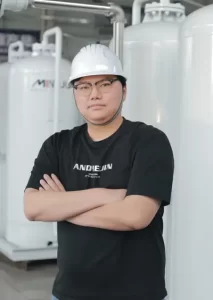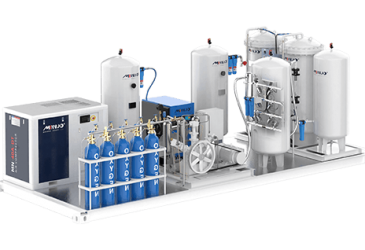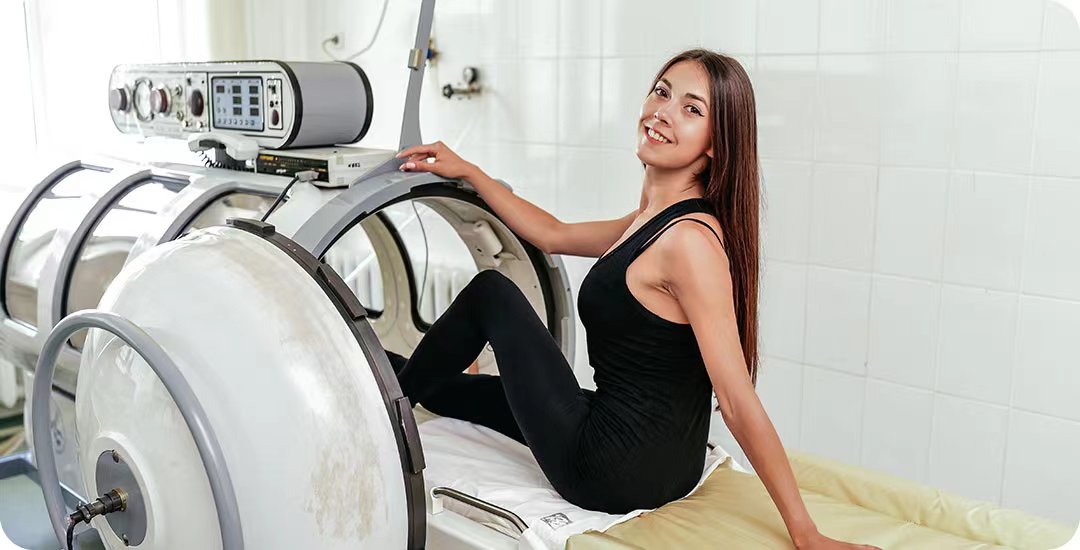Hello, friends. Medical oxygen concentrators, similar to patients’ “oxygen companions”, have an irreplaceable and important position in medical equipment. Widely used in hospitals, home care and emergency medical services, it is not only a necessity in the daily life of patients with chronic respiratory diseases, but also an important aid in improving the quality of life of patients. In recent years, with the aging of society, the incidence of asthma and respiratory diseases has increased, and the market demand for oxygen concentrators has continued to expand. This article will deeply explore the current status of technological innovation and future development trends of medical oxygen concentrators, reveal their importance in the medical field, and provide you with ideas for choosing medical oxygen concentrators.
With the breakthrough of membrane separation technology and the application of new molecular sieve materials, the cost of oxygen concentrators has been continuously reduced. In addition, there are more technological innovations, such as intelligence and digitalization, energy-saving and environmentally friendly design, portability and user-friendliness, and multi-functional integration. The future development of medical oxygen concentrators is bright. Personalized medicine, continuous market expansion, and lasting technological innovation will all be the future development trends of medical oxygen concentrators.
Basic principle of medical oxygen concentrator
First of all, we need to understand the basic principle of medical oxygen concentrators. Medical oxygen concentrators extract oxygen from the air and concentrate it for medical use. Its working principle mainly relies on the following technologies:
Molecular sieve adsorption method
This method uses the adsorption and absorption properties of molecular sieve materials on gases to efficiently separate oxygen from oxygen in the air. When air passes through the molecular sieve, nitrogen is adsorbed, while oxygen passes smoothly, and finally a high concentration of oxygen is obtained.
Membrane separation technology
This technology uses specific membrane materials to separate oxygen and oxygen according to the different sizes of gas molecules. The selectivity of the membrane allows for the collection of higher concentrations of oxygen, and the equipment is typically small and easily transportable.
Low temperature liquefaction method
This method liquefies by lowering the temperature of the air, and then separates oxygen and oxygen by evaporation. Although it is more efficient, the equipment is usually larger and is mainly used in hospitals and professional medical places.
Technological innovation of medical oxygen concentrator
Core Technology
Breakthrough in membrane separation technology
Application of new molecular sieve materials
Intelligence and digitalization
Intelligent monitoring system
Modern oxygen concentrators have real-time monitoring and data recording functions, which can track patients’ oxygen usage in real time and help doctors provide precise treatment. In this way, these data can not only be used for daily monitoring, but also provide doctors with a reference for clinical decision-making.
Remote management function
Through mobile applications, doctors and their ability to monitor patients’ oxygen needs anytime and anywhere. This remote management technology improves patients’ sense of security and comfort, especially when using oxygen concentrators alone at home.
Energy-saving and environmentally friendly design
Thermal low power consumption technology
The new generation oxygen concentrator adopts an enhanced and improved management system, which significantly reduces power consumption and reduces operating costs. This not only helps patients save money, but also conforms to the global emphasis on environmental protection.
The use of renewable materials
More and more manufacturers are beginning to use renewable materials and processes to promote sustainable development. By choosing environmentally friendly materials, the impact of the production process of oxygen concentrators on the environment will be greatly reduced.
Portability and user-friendliness
Implementation of lightweight design
The intimate design of portable oxygen concentrators allows patients to use them at home or when they go out. Many new devices are designed with the user’s mobility needs in mind, so that oxygen therapy is no longer limited by space.
Optimization of simple operation interface
The user interface uses clear and sharp graphics to ensure that elderly patients and non-professionals can operate it easily. This humanized design eliminates user confusion and the elderly can use it with confidence.
Multifunctional integration
Integrated respiratory therapy function
New oxygen concentrators are beginning to integrate other respiratory therapy functions, such as nebulizers and ventilators. This integrated design allows patients to meet multiple medical needs on one device and have a full-featured “health consultant”.
Improvement of monitoring and alarm system
The built-in alarm system of the device can quickly notify the user when the oxygen concentration is insufficient or the device fails, making it safe to use. Therefore, this automated monitoring technology greatly enhances the patient’s confidence in use.
Future development trend
Personalized medicine
With the rapid development of big data and artificial intelligence, medical oxygen concentrators will be able to provide personalized oxygen therapy solutions based on the specific needs of patients. The equipment will use the patient’s historical health data to optimize oxygen supply and improve treatment effects.
Market expansion
With the increasing global aging population and rising incidence of chronic diseases, especially in the Asia Pacific region, the market demand for medical oxygen concentrators is expected to grow rapidly. Especially in developing countries, the improvement of medical facilities will provide new opportunities for the market.
Lasting technological innovation
The R&D team will continue to explore more efficient oxygen separation technologies and new materials to improve the performance and sleep of oxygen concentrators. With the continuous advancement of technology, oxygen concentrators are like evolving bodies, growing and stabilizing life.
Policy support and regulations
Governments will introduce more policies to promote the development and application of medical equipment, including early warning, supervision measures and the formulation of safety standards, which will promote the healthy development of the market. Policy support is like spring rain, injecting vitality into the development of the industry.
The rise of telemedicine
With the popularization of telemedicine services, the market demand for medical oxygen concentrators will further increase. In addition, modular and customized oxygen concentrators will be an ideal choice for remote monitoring and treatment, improving the accessibility of medical services and bringing good news to more patients.
Enhanced user support
The production operation of oxygen concentrators will pay more attention to user education, provide detailed training and continuous technical support to help patients and medical staff use the equipment better. This education and support will enhance the user’s trust and satisfaction and promote the widespread application of equipment.
Cross-border cooperation
The cross-border cooperation between medical equipment manufacturers and software development companies, data analysis companies, etc. will promote the cooperation and digitalization of medical equipment and improve the overall treatment effect. This collaboration, like an “alliance” for medical innovation, has brought new perspectives and solutions to the development of exciting equipment.
Conclusion
The technological innovation of medical oxygen concentrators is like a strong wave, which not only improves the patient’s experience, but also promotes the progress of the entire medical industry. In the future, with the rise of personalized medicine and customized equipment, oxygen concentrators will become increasingly efficient, environmentally friendly and humanized, following the ever-changing market demand. Of course,our MINNUO medical oxygen concentrator is always at the forefront of technology and provides personalized customization services. We will continue to improve ourselves and provide you with better medical oxygen concentrator services.




